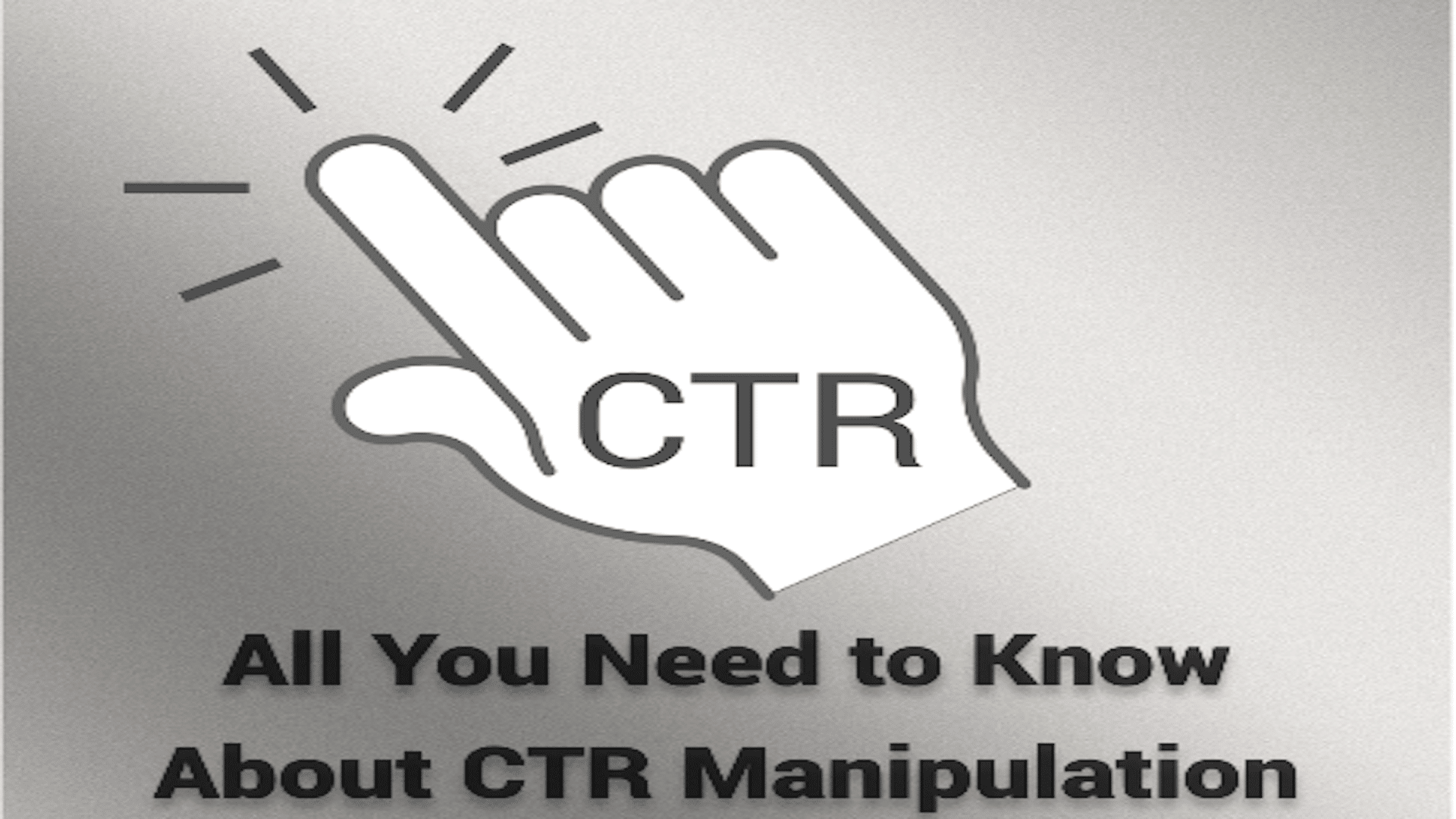Optimize Your Online Influence with LinkDaddy CTR Manipulation Solutions
Optimize Your Online Influence with LinkDaddy CTR Manipulation Solutions
Blog Article
Optimizing Organic Click-Through Fees With CTR Adjustment
The optimization of organic click-through prices (CTR) is a nuanced endeavor that depends upon understanding both customer psychology and effective material discussion. By leveraging tactical control strategies, such as powerfully crafted headings and aesthetically interesting elements, marketers can dramatically enhance user interaction. Nonetheless, the landscape is rife with mistaken beliefs and oversimplifications regarding what truly drives CTR. As we discover the details of these strategies, it becomes important to determine the underlying principles that can result in continual success in catching audience interest. What absolutely distinguishes the efficient from the inefficient in this essential facet of electronic advertising and marketing?
Recognizing Click-Through Fees
Comprehending click-through rates (CTR) is important for evaluating the performance of internet marketing techniques. CTR measures the percent of individuals who click a certain link or promotion contrasted to the total variety of individuals who watch it. A greater CTR suggests that the content is involving and appropriate to the target audience, while a lower CTR might signal a demand for optimization.
To determine CTR, divide the variety of clicks by the number of impacts and increase by 100. For instance, if an advertisement gets 300 clicks out of 10,000 impacts, the CTR would be 3%. This statistics is vital for evaluating numerous aspects of electronic advertising, consisting of search engine optimization (SEARCH ENGINE OPTIMIZATION), e-mail campaigns, and social media sites marketing.
In addition, evaluating CTR helps marketers recognize which techniques generate the most effective outcomes and which call for refinement. By concentrating on improving CTR, businesses can boost their material's presence and efficacy, causing raised web traffic and possible conversions. Understanding the subtleties of CTR is foundational for any type of online marketer intending to optimize their on the internet presence and make the most of roi (ROI)

The Psychology of Individual Behavior
User actions is dramatically affected by mental elements that dictate how people connect with on the internet web content. Understanding these factors is vital for enhancing click-through rates (CTR) in organic search results page. Cognitive biases, such as the anchoring effect, play an important duty fit customers' understandings. Their first impressions can greatly influence their succeeding judgments about importance and trustworthiness. when users come across information.
Emotional actions also dramatically impact individual actions. Material that reverberates mentally can trigger a feeling of necessity or curiosity, motivating users to click. In addition, social proof-- such as individual testimonials or ratings-- can improve trust fund and encourage interaction, as people frequently seek to the behaviors of others to inform their very own choices.
Moreover, the principle of deficiency can drive clicks - CTR Manipulation Press Release. Limited-time deals or special web content produce an anxiety of missing out (FOMO), compelling individuals to act swiftly. Recognizing these psychological chauffeurs allows marketing experts to create more engaging web content that reverberates with their target market
Reliable CTR Adjustment Strategies
Leveraging psychological insights can considerably improve click-through prices (CTR) via targeted adjustment methods. Among one of the most efficient techniques is using compelling headlines that evoke inquisitiveness or necessity. Wording titles as concerns or integrating numbers can bring in even more interest, prompting users to click.
An additional strategy includes enhancing meta descriptions to develop a feeling of significance and immediacy. By clearly laying out the services or advantages supplied in the material, you can engage possible visit their website visitors and persuade them to click. In addition, using power words-- such as "exclusive," "confirmed," or "complimentary"-- can improve the appeal of your web content.
Visual elements additionally play a vital function. Incorporating eye-catching photos or thumbnails can draw customers in and enhance CTR. A/B screening different visuals can aid determine which images reverberate best with your target market.
Lastly, ensuring that your material promises deliverable worth results in greater CTR. When users regard that clicking will provide them with significant insights or options, they are more probable to engage. By utilizing these techniques thoughtfully, online marketers can effectively adjust CTR to their advantage while preserving moral standards.
Typical Misconceptions Regarding CTR
Numerous misunderstandings border click-through rates (CTR) that can lead marketing professionals to make illinformed decisions. One common misconception is that a greater CTR always converts to better performance. While a high CTR recommends that more users are clicking, it does not ensure conversions or sales. Eventually, the performance of traffic relies on the top my explanation quality of the landing page and the importance of the material.
One more usual belief is that CTR is an isolated metric. Actually, CTR must be evaluated together with various other efficiency indicators, such as bounce rate and conversion price, to get an alternative view of project success.
In addition, some marketing experts presume that enhancing for CTR alone suffices. Nonetheless, concentrating exclusively on CTR can lead to clickbait methods that may attract clicks yet stop working to involve individuals meaningfully. This strategy can hurt brand name track record and result in reduced retention rates
Finally, there is a notion that CTR methods are universally reliable. The truth is that optimum CTR tactics can differ considerably throughout markets and target market, necessitating customized approaches for various market segments. Comprehending these misconceptions is important for developing efficient CTR approaches that align with overarching marketing goals.
Gauging CTR Success
Although high click-through rates (CTR) can suggest effective engagement with web content, measuring their real success requires a detailed evaluation of a number of variables. It is essential to comprehend the context in which the CTR is achieved. A high CTR on a deceptive title may not convert to meaningful interaction or conversions, inevitably reflecting inadequately on the brand's credibility.
2nd, evaluating the resource of website traffic is vital. Organic traffic from search engines can signify a durable web content approach, while clicks from unimportant resources may suggest an absence of targeting. In addition, measuring the subsequent individual habits is crucial; assessing metrics such as bounce price, time invested in web page, and conversion prices can give deeper insights into the high quality of the interaction these details started by the CTR.

Final Thought

The optimization of organic click-through prices (CTR) is a nuanced endeavor that pivots on comprehending both user psychology and reliable material discussion. CTR determines the percent of individuals that click on a particular web link or advertisement contrasted to the overall number of users that view it. A greater CTR indicates that the material is involving and relevant to the target audience, while a reduced CTR might indicate a demand for optimization.
Focusing solely on CTR can lead to clickbait tactics that may bring in clicks but stop working to engage individuals meaningfully. In addition, measuring the subsequent individual behavior is essential; assessing metrics such as bounce price, time spent on page, and conversion rates can supply much deeper insights into the high quality of the involvement launched by the CTR.
Report this page